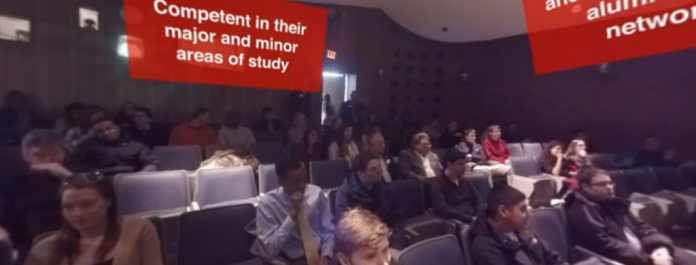Virtual reality (VR) is entering its consumer era. Although it’s not quite hit its full stride, you only have to look at the sheer amount of VR content coming out of this year’s Electronic Entertainment Expo (E3) to know that the technology is growing quickly and catching the interest of retailers and marketers as well as ordinary consumers. We recently reported that shoppers think that VR will have an effect on their buying habits and that it makes sense that retailers are responding to this, but is it necessary for all kinds businesses to invest in the technology despite its rapid growth in adoption? According to marketing experts from Forrester, not really.
In a report titled The Coming Wave of Virtual Reality, Forrester estimates that by the year 2020 around 52 million VR headsets will be in use across the United States. This is a massive increase, but Forrester also points out that companies should exercise caution when it comes to adopting the technology and be careful not to get swept away on a wave of hype, though nor should they immediately fall back on their skepticism and dismiss it. What companies have to do, they say, is simply consider whether or not VR technology works specifically for them rather than generally. In the report JP Gownder advises “Two things determine how and when you should pursue VR: how ready your customers are to experience your product or service virtually and whether VR will have a comprehensive or modest effect on the experience of your brand.”
This seems like reasonable and fair advice. If your audience is made up largely of younger people and early adopters who are constantly engaging with new technologies and the digital world VR is absolutely a good and exciting platform through which to reach them. That said, it’s only a good if you’re making the most of what the content offers to create a meaningful rather than inauthentic and gimmicky experience. For example, 1to1media reports that universities have had particular success with VR technology, with University of Hartford’s Barney School of Business using the technology to find a new way to attract incoming students by letting them explore the university campus and its classrooms without having to physically go there. According to Marty Roth, dean and professor of management and marketing at the university, feedback was “extremely positive” and resulted in an increase in student interest in attending.
With VR being such a new way to create and distribute content, it’s absolutely worth it for companies to experiment with the technology and see how it works for them (there’s no point in falling behind). However, despite its growing popularity, forcing VR experiences into your marketing campaign will not guarantee success and companies ought to bear in mind who they’re engaging with and what they’re trying to engage them in and whether or not VR will add value to this.















